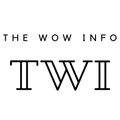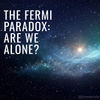The World Wide Web, commonly referred to as the "Web," has evolved tremendously since its inception in the 1980s. As the internet has become an essential part of our daily lives, the term "Web" has come to encompass many different aspects of online interactions and services. These different iterations of the Web are commonly referred to as Web 1.0, Web 2.0, and Web 3.0, and each has its own unique characteristics and capabilities.
Web 1.0
Web 1.0, also known as the "Static Web," refers to the earliest iteration of the Web, which existed from the 1990s until around 2004. This version of the Web was characterized by static, one-way content delivery, with websites acting as digital brochures that provided information to users without the ability for users to interact with the content.
During this time, websites were typically created using HTML and were relatively simple in design, with limited graphics and multimedia capabilities. Websites were mostly created by technical experts and were typically used to provide information about businesses or organizations.
Web 1.0 also lacked the social and collaborative features that are now commonplace on the Web. There was no concept of social media or user-generated content, and online interactions were limited to email and basic chat rooms.
Web 2.0:
Web 2.0 emerged around the mid-2000s and is sometimes referred to as the "Social Web." This iteration of the Web saw a significant shift in the way websites were designed and used, with a focus on user interaction and collaboration.
Web 2.0 allowed users to contribute and create content on websites, transforming the Web from a one-way information delivery system to a collaborative platform. This version of the Web also saw the emergence of social media platforms, which allowed users to connect and communicate with each other in new ways.
Web 2.0 also saw a shift in the way websites were built, with the emergence of dynamic web applications that allowed for more complex interactions and functionality. These applications were built using technologies such as JavaScript, CSS, and AJAX, and allowed for the creation of more interactive and engaging user interfaces.
Web 3.0
Web 3.0, also known as the "Semantic Web," is the latest iteration of the Web and is still in development. The focus of Web 3.0 is on making the Web more intelligent and intuitive by enabling machines to understand and interpret human-generated content.
Web 3.0 aims to create a Web where information is organized and connected in a more meaningful way, allowing machines to understand the relationships between different pieces of information. This would enable more intelligent search results, as well as the ability for machines to perform more complex tasks such as natural language processing and machine learning.
Web 3.0 also aims to create a more decentralized and secure Web, where users have more control over their data and can interact with each other without relying on centralized intermediaries. This is achieved through the use of blockchain technology and other decentralized protocols, which allow for more secure and transparent interactions online.
Comprehensive Comparison:
| Aspect | Web 1.0 | Web 2.0 | Web 3.0 |
|---|---|---|---|
| Timeframe | 1990s to early 2000s | Mid-2000s to present | Currently in development |
| Content Delivery | Static, one-way | Interactive, user-generated | Intelligent, machine-readable |
| User Interaction | Limited | High | Intelligent, natural language processing |
| Technology | HTML, limited multimedia | Dynamic web applications, AJAX | Blockchain, decentralized protocols |
| Focus | Information delivery | Collaboration, social media | Decentralization, security, semantic technology |
| Examples | Early websites | Facebook, Twitter, YouTube, etc. | Decentralized platforms, smart contracts |
| Characteristics | Text-heavy, simple design | Rich multimedia, dynamic content | Machine-readable, decentralized, intelligent |
| Purpose | To deliver information | To foster collaboration and sharing | To create a more intelligent and decentralized Web |
| Key Benefits | Simple, fast, easy to use | Interactive, engaging, social | Secure, transparent, intelligent, decentralized |
| Key Limitations | Limited user interaction | Potential for information overload | Currently in development, limited adoption |
As this table shows, each iteration of the Web has its own unique characteristics and capabilities, with Web 3.0 currently in development and aiming to create a more intelligent, decentralized, and secure Web.
In conclusion, the Web has undergone significant changes since its inception, with each iteration bringing new capabilities and opportunities for users. Web 1.0 was characterized by static content delivery, while Web 2.0 introduced user-generated content and collaboration. Web 3.0 aims to make the Web more intelligent and intuitive, with a focus on decentralization and security. As the Web continues to evolve, it will be interesting to see how it continues to shape our lives and interactions online.
Read about the history of Internet:
THE HISTORY OF THE INTERNET
Discover More
Most Viewed
Christmas is a season of joy, love, and traditions. And what better way to get into the holiday spirit than through timeless carols? These musical gems have been bringing people together for generations. Here’s our ranked list of the Top 10 Christmas Caro…
Read More
















